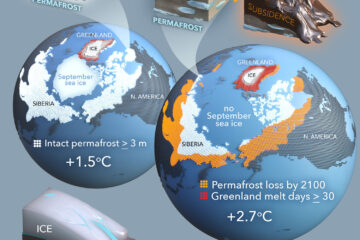Recovery of ponderosa pine ecosystem carbon and water fluxes from thinning and stand‐replacing fire
Carbon uptake by forests is a major sink in the global carbon cycle, helping buffer the rising concentration of CO2 in the atmosphere, yet the potential for future carbon uptake by forests is uncertain. Climate warming and drought can reduce forest carbon uptake by reducing photosynthesis, increasing respiration, and by increasing the frequency and intensity of wildfires, leading to large releases of stored carbon. Five years of eddy covariance measurements in a ponderosa pine (Pinus ponderosa)-dominated ecosystem in northern Arizona showed that an intense wildfire that converted forest into sparse grassland shifted site carbon balance from sink to source for at least 15 years after burning. In contrast, recovery of carbon sink strength after thinning, a management practice used to reduce the likelihood of intense wildfires, was rapid. Comparisons between an undisturbed-control site and an experimentally thinned site showed that thinning reduced carbon sink strength only for the first two posttreatment years. In the third and fourth posttreatment years, annual carbon sink strength of the thinned site was higher than the undisturbed site because thinning reduced aridity and drought limitation to carbon uptake. As a result, annual maximum gross primary production occurred when temperature was 3 °C higher at the thinned site compared with the undisturbed site. The severe fire consistently reduced annual evapotranspiration (range of 12–30%), whereas effects of thinning were smaller and transient, and could not be detected in the fourth year after thinning. Our results show large and persistent effects of intense fire and minor and short-lived effects of thinning on southwestern ponderosa pine ecosystem carbon and water exchanges.


